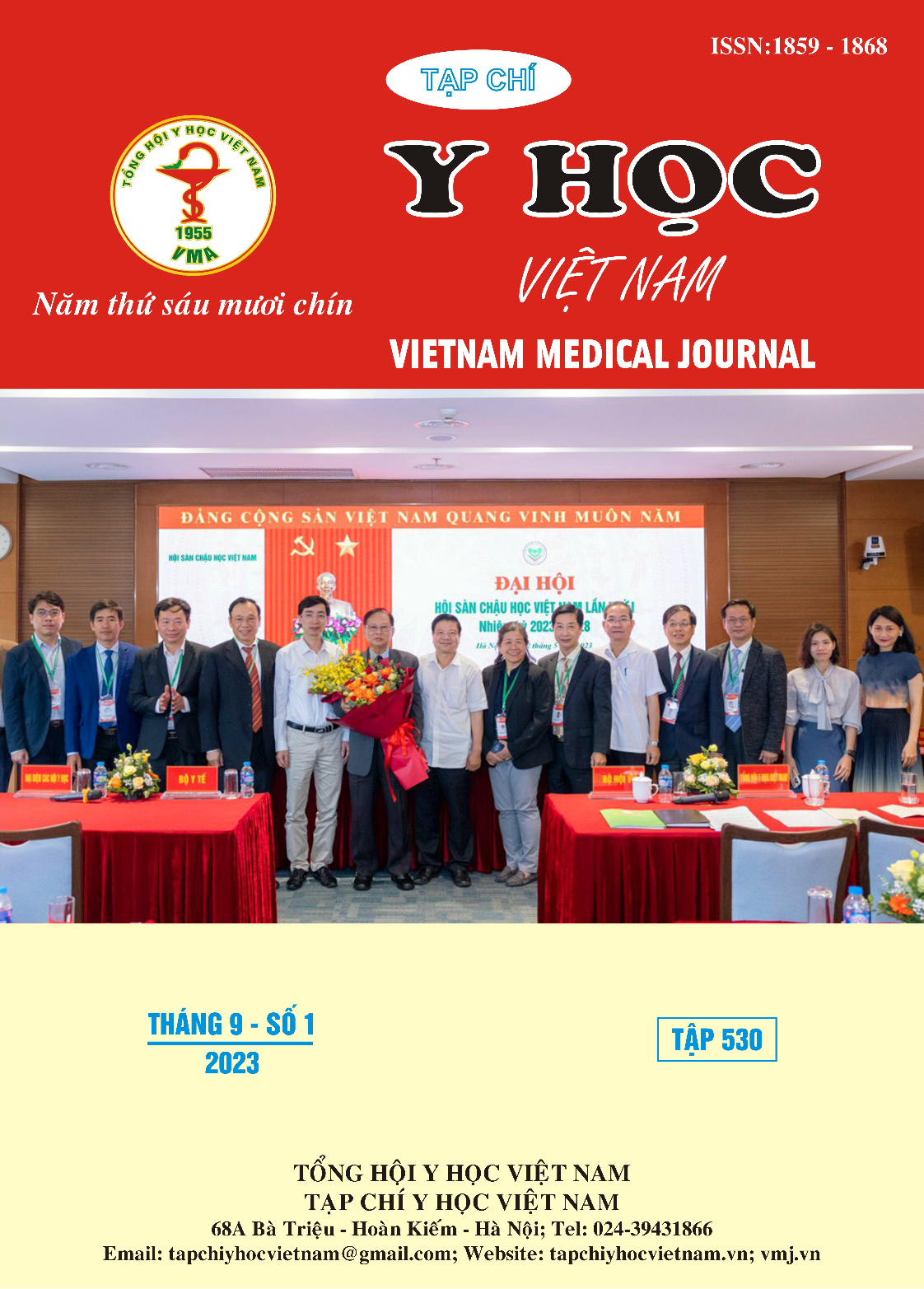RELATION BETWEEN IDENTIFICATION OF PATHOGENIC MICROORGANISMS CAUSING INFECTIVE ENDOCARDITIS USING REAL-TIME PCR METHOD AND SOME CLINICAL AND PARACLINICAL CHARACTERISTICS
Main Article Content
Abstract
Objectives: To evaluate the relationships between the results of identification of microorganisms causing infectious endocarditis (IE) by real-time PCR method with some clinical and subclinical features. Subjects and methods: A total of 108 patients were diagnosed as IE at the Vietnam Heart Institute - Bach Mai Hospital according to the ESC 2015 and tested by real-time PCR at 108 Clinical Medicine Research Institute. Clinical and laboratory characteristics including clinical symptoms, laboratory features including some parameters of echocardiography, hematological and blood biochemistry tests were collected. Real-tine PCR and blood culture procedures were performed to identify the pathogens. Results: The percentage of the patients presented symptoms of fever and chills in the group of the patients with positive PCR result test (76.7%) (PCR (+)) was significantly higher than in the group of the patients with negative PCR result test (PCR (-)) (57.1%) (OR: 2.471, p<0.05). The mean value for white blood cell number and blood level of highly sensitive C-reactive protein were significantly higher in the group of the patients with PCR (+) than in the group of the patients with PCR (-) (p< 0.05). Real-time PCR results were in agreement with the results of blood cultures test in determining Staphylococcus ssp. and Enterococus ssp. (p<0.05). Conclusion: The study illustrated the relationships between the results of identification of microorganisms causing infectious endocarditis (IE) by real-time PCR method and some clinical and subclinical symptoms. Using real-time PCR method showed high value and was in agreement with the results of blood culture test in identifying microorganisms causing IE.
Article Details
Keywords
Infective endocarditis, echocardiography, blood culture, Real-Time PCR
References
2. Bui STT, Duong HD, Vu TT, et al. Multimodality imaging in the diagnosis of bioprosthetic aortic valve endocarditis: A case report. Ann Med Surg (Lond). 2022; 80:104238
3. Ciliberto GR, Moreo A, Lobiati E, et al. The limitations of echocardiography in the overall diagnosis of the morphological lesions associated with infective endocarditis: comparison of echocardiographic and surgical findings. G Ital Cardiol. 1999; 29(12):1431-7.
4. Habib G, Lancellotti P, Antunes MJ, et al. 2015 ESC Guidelines for the management of infective endocarditis: The Task Force for the Management of Infective Endocarditis of the European Society of Cardiology (ESC). Endorsed by: European Association for Cardio-Thoracic Surgery (EACTS), the European Association of Nuclear Medicine (EANM) Eur. Heart J. 2015;36:3075–3128.
5. Halavaara M, Martelius T, Järvinen A, et al. Impact of pre-operative antimicrobial treatment on microbiological findings from endocardial specimens in infective endocarditis. Eur J Clin Microbiol Infect Dis. 2019; 38(3):497-503.
6. Liesman RM, Pritt BS, Maleszewski JJ, et al. Laboratory Diagnosis of Infective Endocarditis. Journal of Clinical Microbiology. 2017; 55, 2599–2608.
7. Murdoch DR, Corey GR, Hoen B, et al. International Collaboration on Endocarditis-Prospective Cohort Study (ICE-PCS) Investigators. Clinical presentation, etiology, and outcome of infective endocarditis in the 21st century: the International Collaboration on Endocarditis-Prospective Cohort Study. Arch Intern Med. 2009;169(5):463-73.
8. Yallowitz AW, Decker LC. Infectious Endocarditis. 2023. In: StatPearls [Internet]. Treasure Island (FL): StatPearls Publishing; 2023 Jan–. PMID: 32491573.


